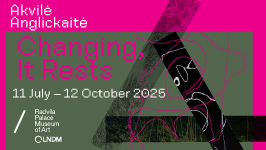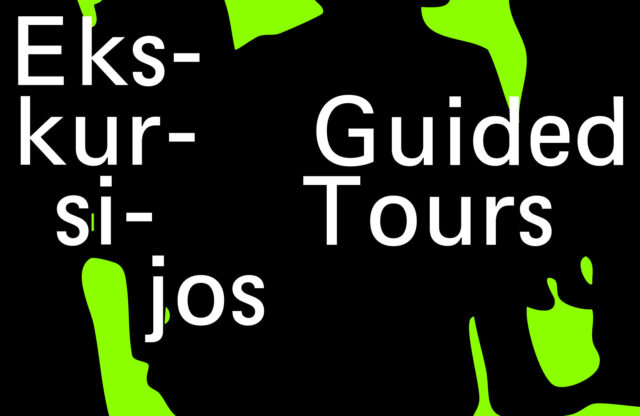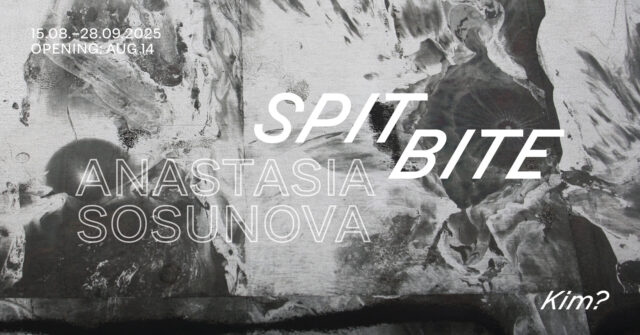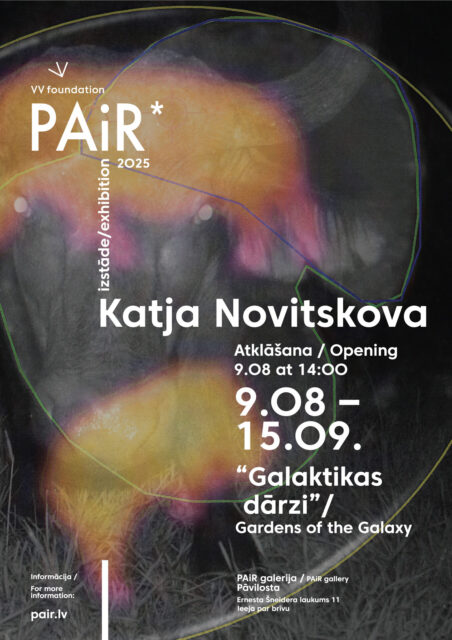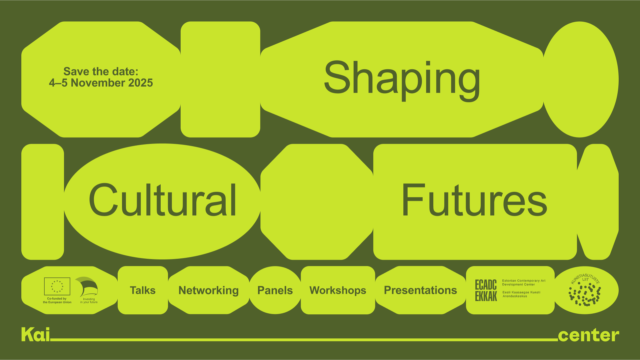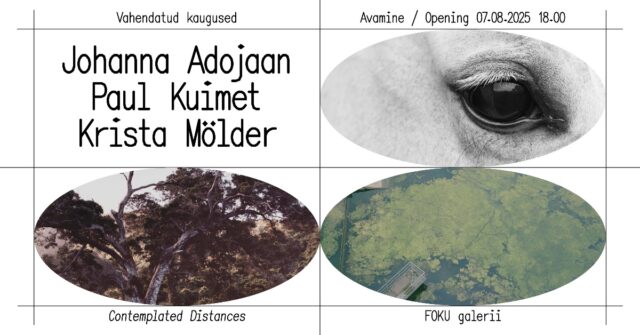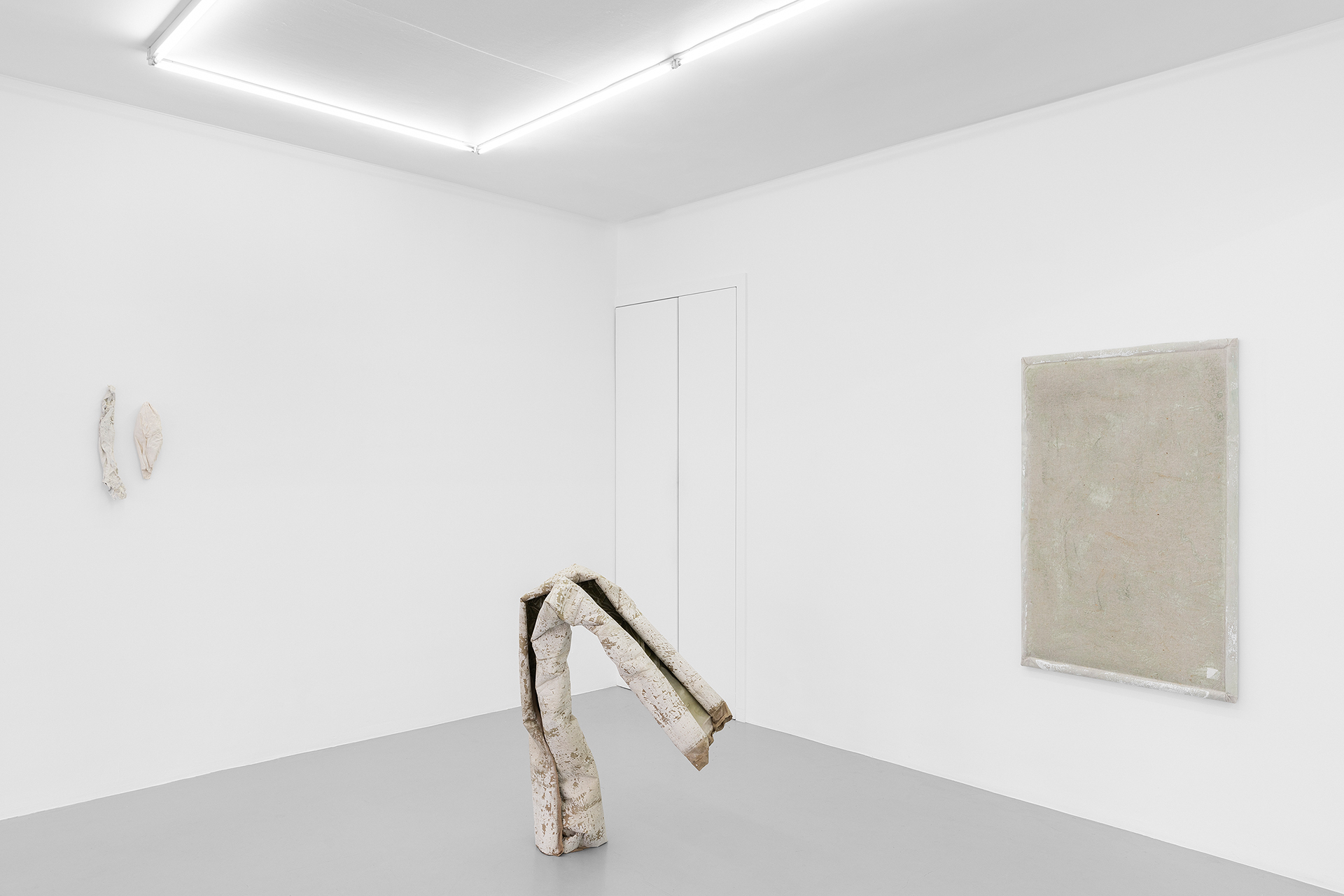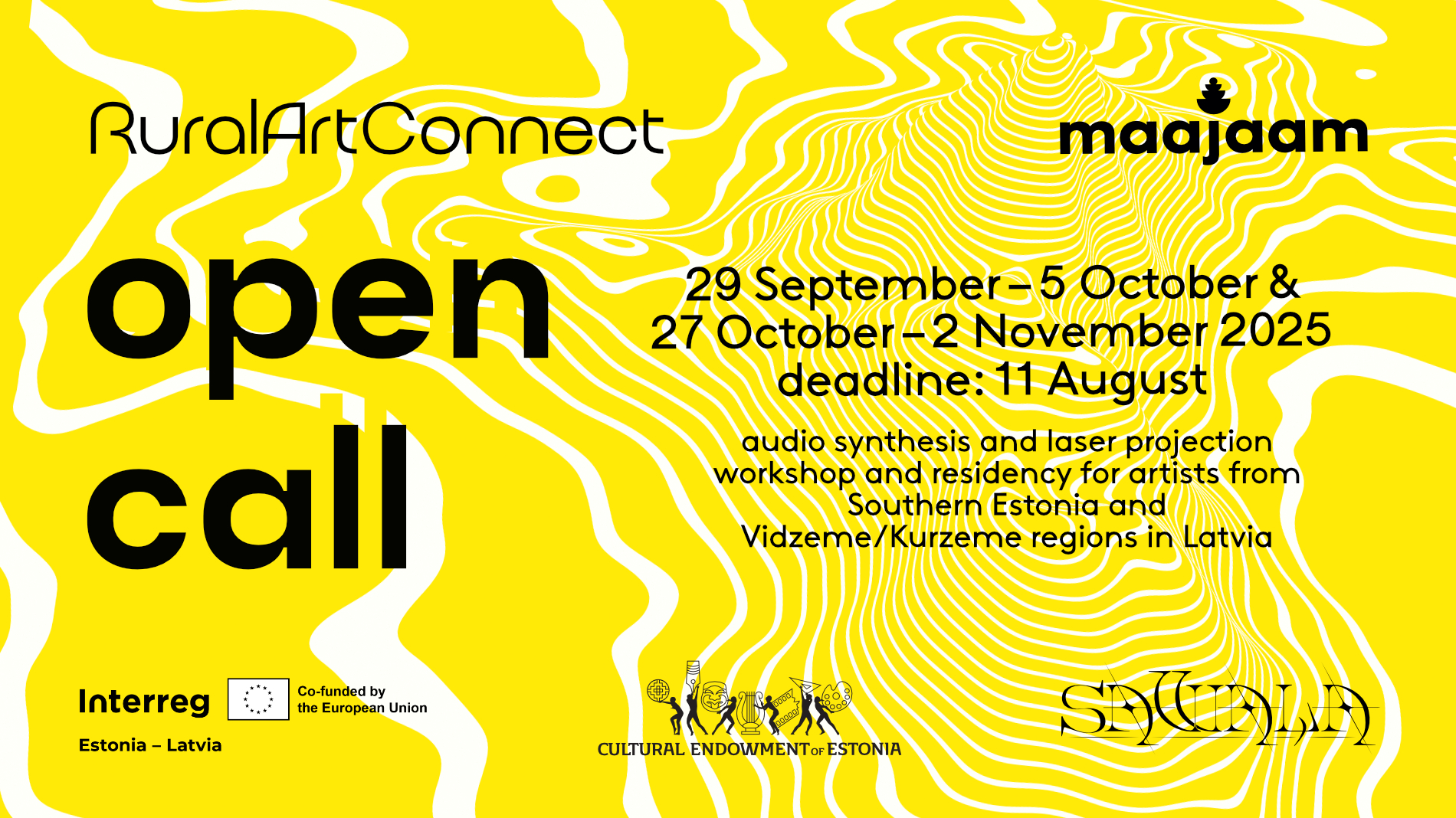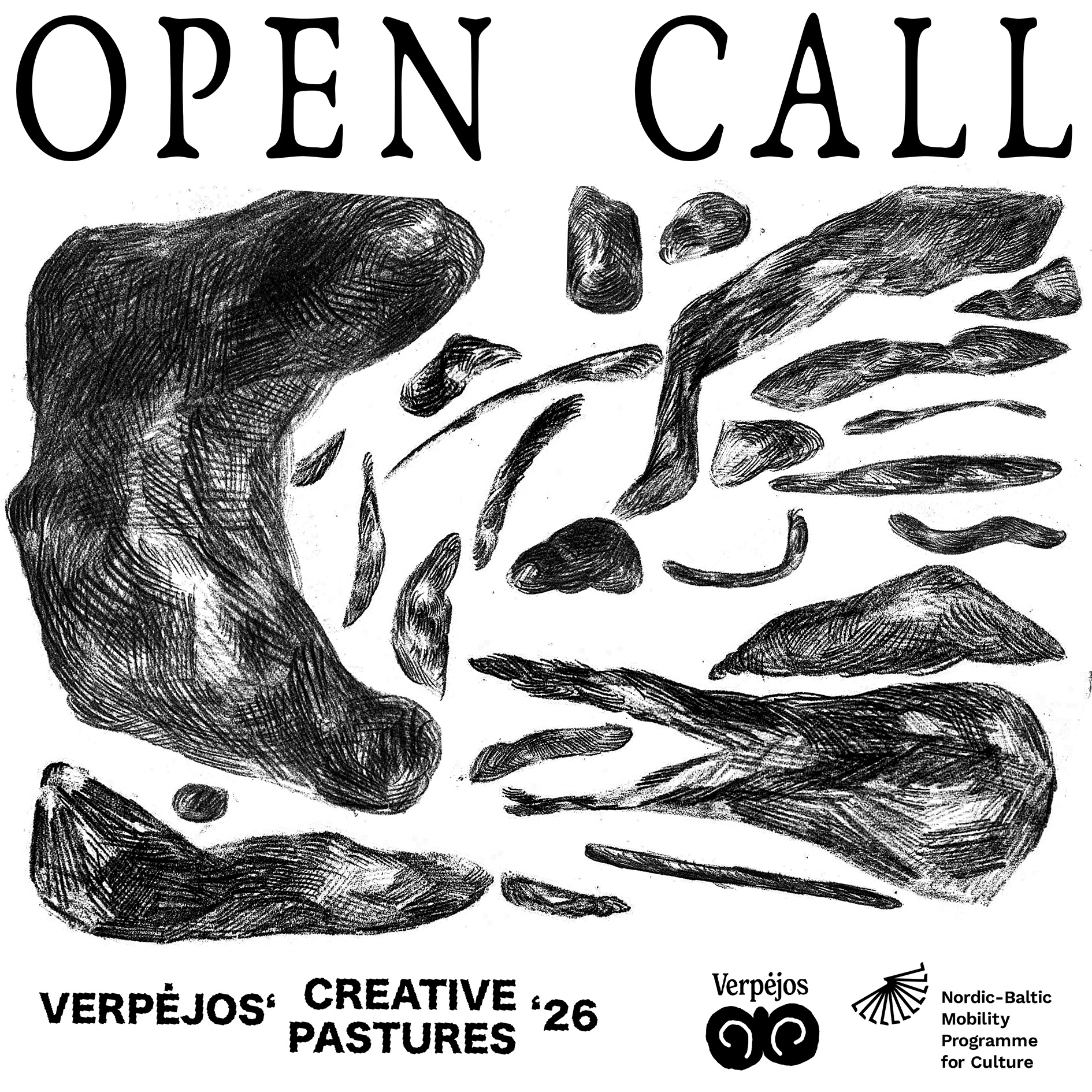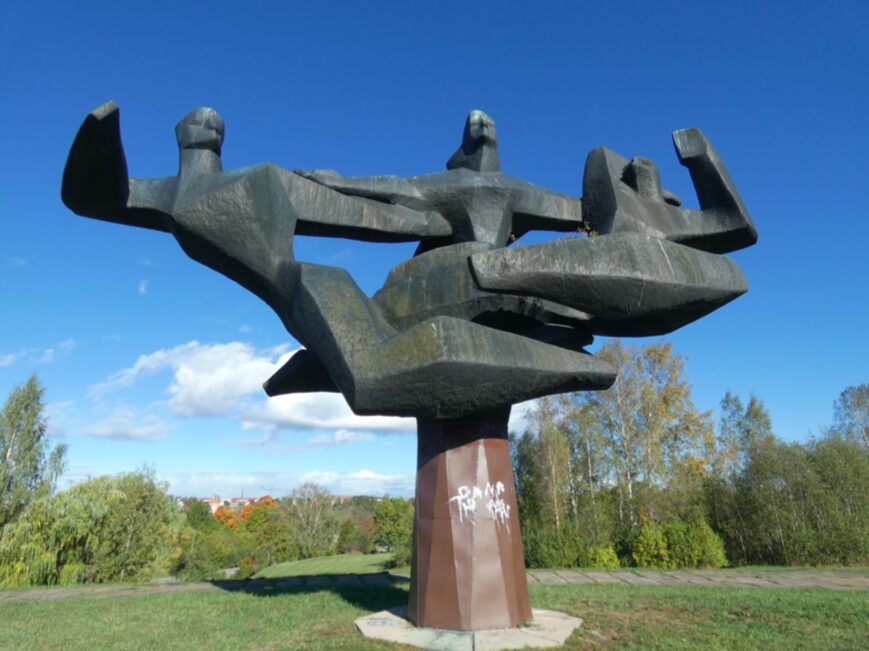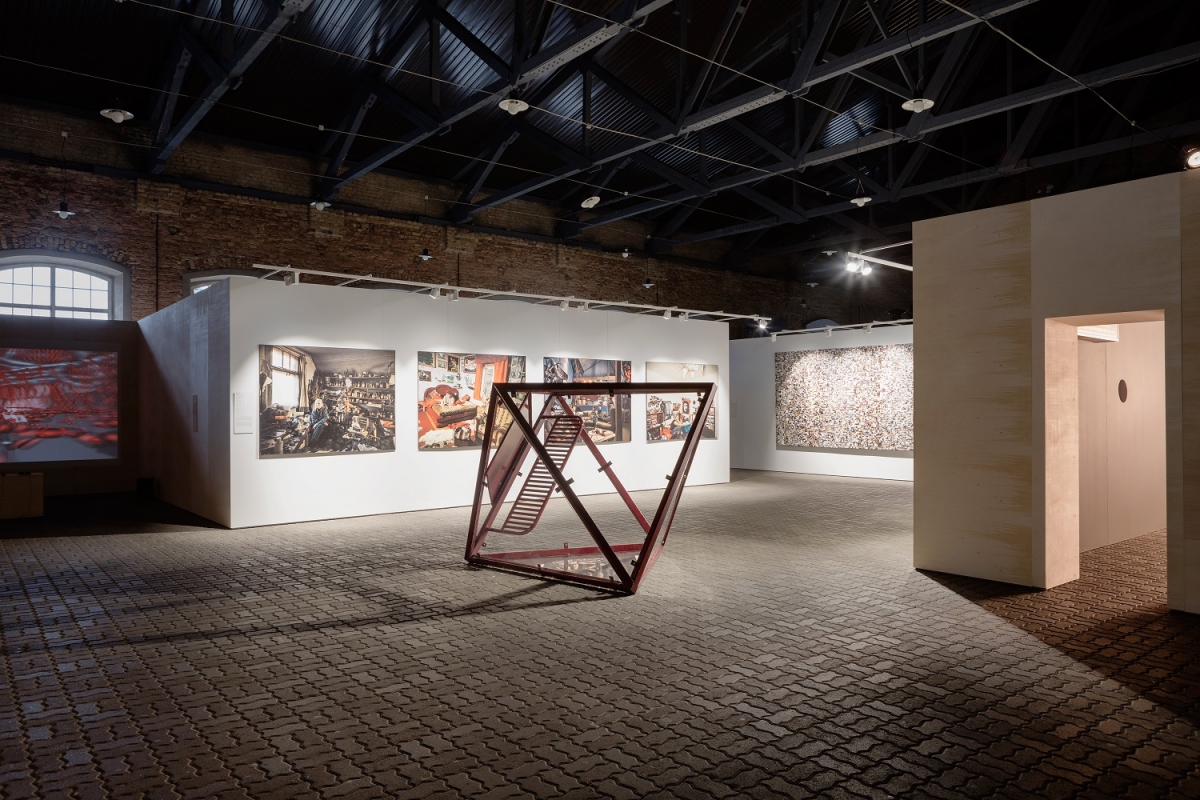
Light at the End of the Cable. Latvian Art in the Digital Era. Works from the state-owned collection of the future Latvian Museum of Contemporary Art (curator Helēna Demakova), exhibition view, Latvian Railway History Museum, 2016. Photography: Reinis Hofmanis
Exhibition Light at the End of the Cable. Latvian Art in the Digital Era. Works from the state-owned collection of the future Latvian Museum of Contemporary Art (curator Helēna Demakova), Latvian Railway History Museum, 27.09–18.10.2016
While the Latvian Museum of Contemporary Art still has to be built, and is expected to open in 2021, a considerable, partly state-owned, partly bank-owned collection of future exhibits has been already amassed, thanks to the investment of ABLV Bank and Norwegian funding. This is possibly better than the other way round, to have an imposing building with little to put inside it (the more radical idea of a debate and collaboration platform, without any actual collection of objects, is unlikely to be accepted). A series of recent exhibitions has demonstrated highlights from the future museum, such as the shows Test (2012) at the Latvian National Museum of Art, and ... for an occurrence to become an adventure … (2013) at the Riga Art Space. In the catalogue for the present event showcasing the state-owned exhibits, the curator also outlines the history and concept of the whole collection: “An international commission of experts decided which works of art would be acquired or accepted as gifts, starting from a specific creative era onwards. The era chosen was the 1960s, when the entire body of ‘products’ of world art, which then first began to be referred to as contemporary, was influenced by global conceptual movements, placing an emphasis on the idea of the work of art” (Gaisma kabeļa galā = Light at the End of the Cable [exhibition catalogue], ed. Helēna Demakova, Riga: Borisa un Ināras Teterevu fonds, 2016, p. 8). Geographically, the Baltic Sea region was chosen as the area of interest, including not only works by Latvian artists.
The present exhibition can in a sense be called a parade of contemporary classics, even if this sounds a bit like a contradiction in terms. All the artists, mainly graduates of the Visual Communication Department of the Latvian Academy of Art, are well known on the Latvian art scene, and most of them are now in their 30s or 40s. The exhibits date from the early 21st century up to the present day, i.e., covering about 15 years. Numerous works have been shown at significant events abroad, and are conceivably less known to the local public. Without a contemporary art museum, the younger generation, who were still children in the early 2000s, had no chance to see the original exhibitions for which these pieces were created. Regardless of the current fashion for collaboration and interaction instead of ‘direct’ instruction, the educational pathos of the show is very pronounced, with an informatively rich catalogue included in the price of the entrance ticket, and guided tours offered for young people. Most of the artists represented, however, are Latvians, so neighbouring regions have not been prioritised.
TECHNICAL SOLUTIONS AND PERILS
The title of the show is appropriated from the work by the sisters Anta and Dita Pence, whose tandem is known in the contemporary art world in Latvia by their paradoxical, witty, playful multimedia works, with a particular interest in the qualities of kinetic objects. Light at the End of the Cable (2009) consists of a perpetually circling and ringing mobile phone, paraphrasing the universally known dictum ‘light at the end of the tunnel’, meaning an exit from some difficult situation (the 2009 economic crisis served as a certain inspiration, according to the artists). Seemingly suggesting some techno-based optimism in the title, the work itself, with its never-ending orbit, recalls more the vicious circle of technological obsession and addiction. This work shows a certain direction in which one might interpret a number of exhibits, for instance, Ēriks Božis’ miniature installation of cross-shaped computer keyboards Press! Press! Press! (2003), reformulating the Christian promise of salvation as the universal digital solution of every present-day problem. However, there seems to be no single unifying message common to all the works. A range of Wittgensteinian ‘family resemblances’ can be possibly detected in the driving interests of artists, some more dominant than others at times.
Reflecting on the wider-scale, global impact of technological civilisation with a subtly critical note, the artists’ group Famous Five (F5, Līga Marcinkeviča, Mārtiņš Ratniks, Ieva Rubeze) in their work Have a Nice Night! (2002) interpret the subject of light pollution, precluding the observation of stars. This piece represented Latvia at the 25th São Paolo Art Biennial, with poetic videos showing portraits of people while contemplating the stars, as well as a tram ride to the final stop to escape the city’s light pollution. The tram now and again resembles some futuristic spaceship, moving through the Universe at the speed of light. A more enigmatic work without any easily graspable message seems to be Jānis Garančs’ Heroscope (2009), a stereoscopic projection drawing the viewer into a virtual world of endlessly multiplying and mutating forms, among which a rather motionless human figure can be discerned. As the explanation names heroism to be the work’s main theme, this stillness makes one interpret the modern-day hero as someone losing most of his activity and agency.
DIVERSE MEANS, DIVERSE EXPERIENCES
The exhibition’s subtitle Latvian Art in the Digital Era broadens the scope of the works to include much more than new media, digital or electronic art. There are also seemingly simple photographs, and even paintings on view, such as Vilnis Vītoliņš’ photographs from the series 100 rooms, with a hyperrealist wealth of detail in the living spaces of very different people, or Monika Pormale’s series of light boxes with colour photographs Miss Worlds (2009), diversifying the standards of beauty pageants. Kristaps Ģelzis’ watercolour and fluorescent acrylic paintings, in their turn, seem to simulate electronic screens, combining mysterious beauty with prosaic everyday representational elements. Armands Zelčs’ metal and plexiglas object Destination (2007), a strangely contorted transport stop without either an entrance or an exit, also has nothing to do with the ‘digital’ in any specific sense, pointing to more existential themes.
National and/or political issues do not prevail in the cluster of ideas mentioned in the concept of the collection, but some examples can be found. Evelīna Deičmane-Vida, in her work Don’t Dream and Don’t Think (2008), has dealt with the complex and traumatic past of the Latvian state; a vinyl record glued together from two different halves indicating two epochs (pre-war independence and Soviet occupation) plays accordingly different songs, accompanied by a video showing the artist’s grandmother’s emotions. The collectively authored work The Exceptional and the Everyday: 144 Hours in Kiev (Alise Tīfentāle, Lev Manovich, Mehrdad Yazdani, Jay Chow, 2014), in its turn, documents a more recent crucial upheaval of political history: consisting of 13,208 images shared by 6,165 Instagram users during Ukraine’s Maidan Revolution, it is a huge panel of minute photographs, with the most diverse moments captured and almost impossible to take in as a whole. Maybe that is reality as it is, just too big to comprehend?
DESTRUCTIVE, PRODUCTIVE, DREAMY STRATEGIES
Most of the works appear to have derived from deeply personal experiences, leaving the task to viewers to figure out if they carry some potentially universal meaning too. The most openly destructive, but also playful and funny, is the case of Maija Kurševa, whose installation and video My Friday (2008) documents the artist consuming alcohol in large quantities in bohemian company, which also includes some puffy, mysterious bright green creature, a bit like an extra-terrestrial humanoid, but possibly a new version of the ‘green dragon’, as alcohol addiction is often referred to in everyday talk. But other contributors are more oriented towards productive and positive activities. Dace Džeriņa’s video Land of Happiness (2008) portrays a sort of ritual putting things around you in order, thus transforming an ugly and derelict old house into a nice romantic place. Cleaning might be one way to put thoughts in order; sport could well be another. Kristaps Epners’ video installation The Run (2013) is a long-term project documenting the surroundings observed while running, and accompanied by a volume in which the linear images of routes are printed, forming strange abstract figures.
Some works do not involve any specific activity, but rather pure observation and contemplation. Ģirts Korps’ work M (2003), reminiscent of a dream, with its constantly shifting and overlapping imagery, has been described as a symbolic whole derived from childhood memories: “… a feeling, an association coming from the sound, and that is why it is an abstract view of the theme without a sequential storyline” (2 Show: Latviešu un lietuviešu jauno mākslinieku izstāde = Young Art from Latvia and Lithuania [Exhibition catalogue], Riga: Kultūras pilotprojekti, 2003, p. 88). A visually splendid and mysteriously esoteric treatment of karmic determinations characterises some early works by Kristīne Kursiša (The Diagnostics of Karma, 2003). Processes in her apparently static pieces, which are in fact video installations, are slow, and require an attentive viewer. Almost nothing happens in Miks Mitrēvics’ video installation Motel (2003) too, with changing meditative snapshots of motel interiors and respective ordinary objects (ashtrays, curtains, sofas, etc), at the same time as suggesting some subtly menacing tones.
HUMAN-LIKE PLANTS AND MORE
Krišs Salmanis knows how to surprise and capture the viewer’s attention: his animation loop The Shower (2007) is seen through a narrow, almost unnoticeable slit in a wall. The work itself, in which a human figure washes away dirt that gradually makes the figure itself invisible, recalls somewhat the main protagonist in H.G. Wells’ The Invisible Man, who could regain visibility only by covering himself. What if something we want to wash off actually makes us who we are? Salmanis’ second work Why I’m Not a Vegetarian (2007) portrays a screaming vegetable over a boiling pot, as if extending the fashionable concerns with animal protection beyond the usual limit. How do we know that plants cannot feel anything when chopped and cooked? A direct continuation of this theme emerges in the interactive installation Talk to Me. Exploring human-plant communication (2011–2015), by the experienced new media artists Rasa Šmite, Raitis Šmits and Mārtiņš Ratniks. This is one of the exhibition’s most scientific projects, in which clear boundaries between art and the natural sciences seem to disappear altogether.
More poetic than political and critical, is a feature often attributed to Latvian art, with contemporary art being no exception. Latvian artists seem to be more inclined to meditate and reflect, than to want to actively influence processes around them, allowing pressing and challenging issues to pass through some imaginative filter, and attempting to escape a reading that is too narrow. The selected highlights of the digital era have provided a chance to encounter and probe the topicality and power of Latvian art, rapidly becoming part of its art history. One could certainly wish such a show to be on view for a longer period, but that is probably a limitation of temporary and adapted spaces, to be removed just by the opening of the long-awaited permanent home for contemporary art.
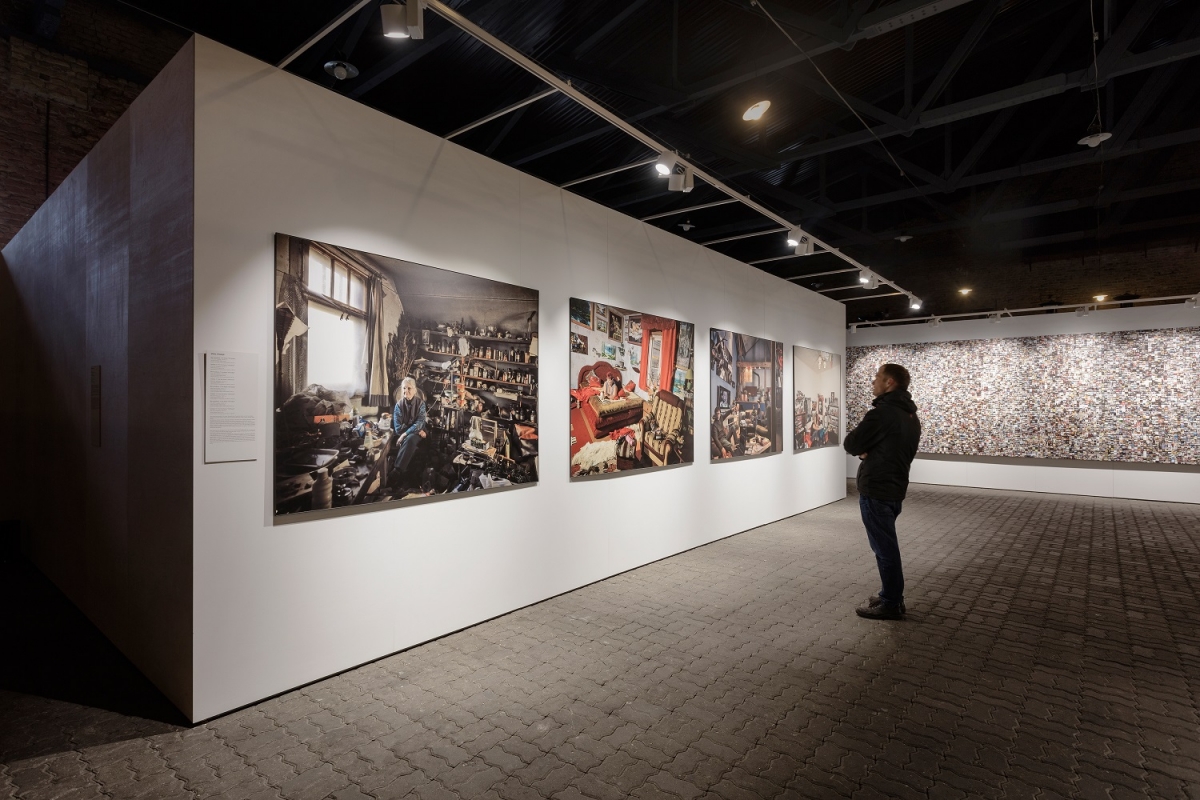
Light at the End of the Cable. Latvian Art in the Digital Era. Works from the state-owned collection of the future Latvian Museum of Contemporary Art (curator Helēna Demakova), exhibition view, Latvian Railway History Museum, 2016. Photography: Reinis Hofmanis

Light at the End of the Cable. Latvian Art in the Digital Era. Works from the state-owned collection of the future Latvian Museum of Contemporary Art (curator Helēna Demakova), exhibition view, Latvian Railway History Museum, 2016. Photography: Reinis Hofmanis
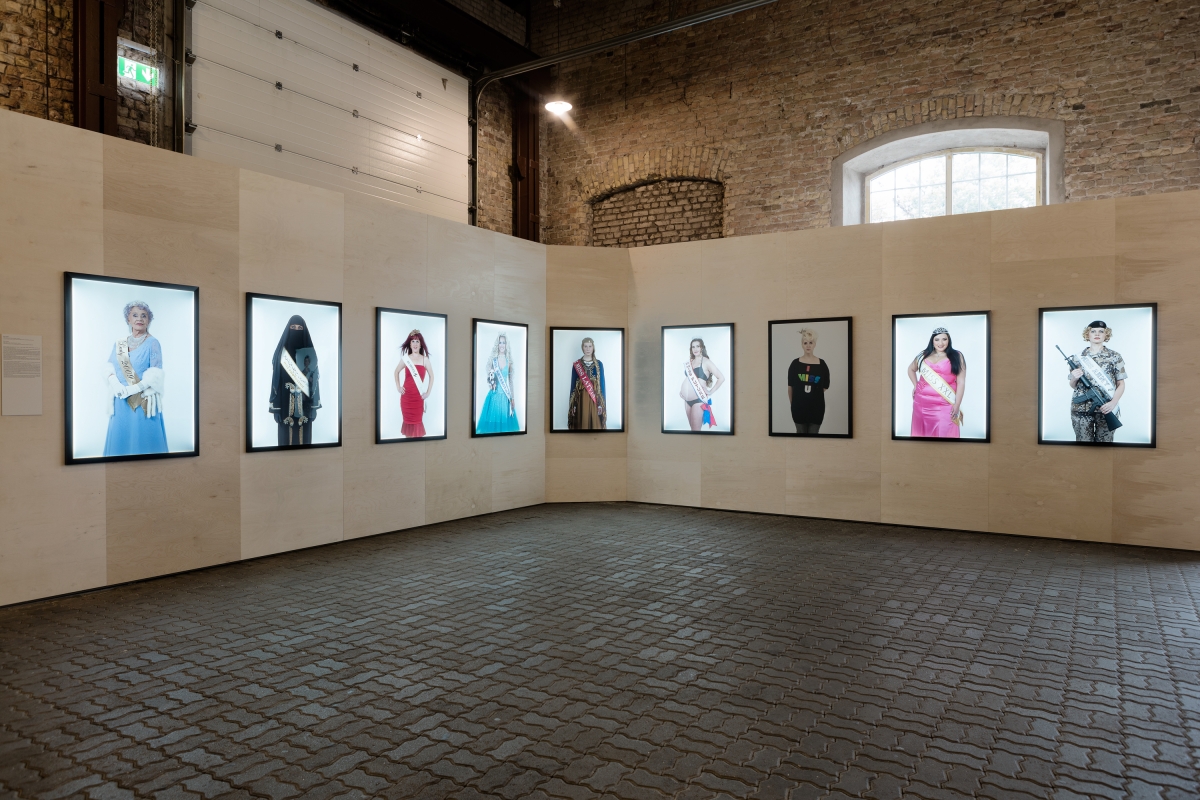
Monika Pormale “Miss Worlds” 2009. Nine light boxes with colour photographs.
125×90 cm (each). Photography: Reinis Hofmanis

Kristaps Ģelzis “Bedtime Story” 2008. Watercolour, fluorescent acrylic on paper. Photography: Reinis Hofmanis
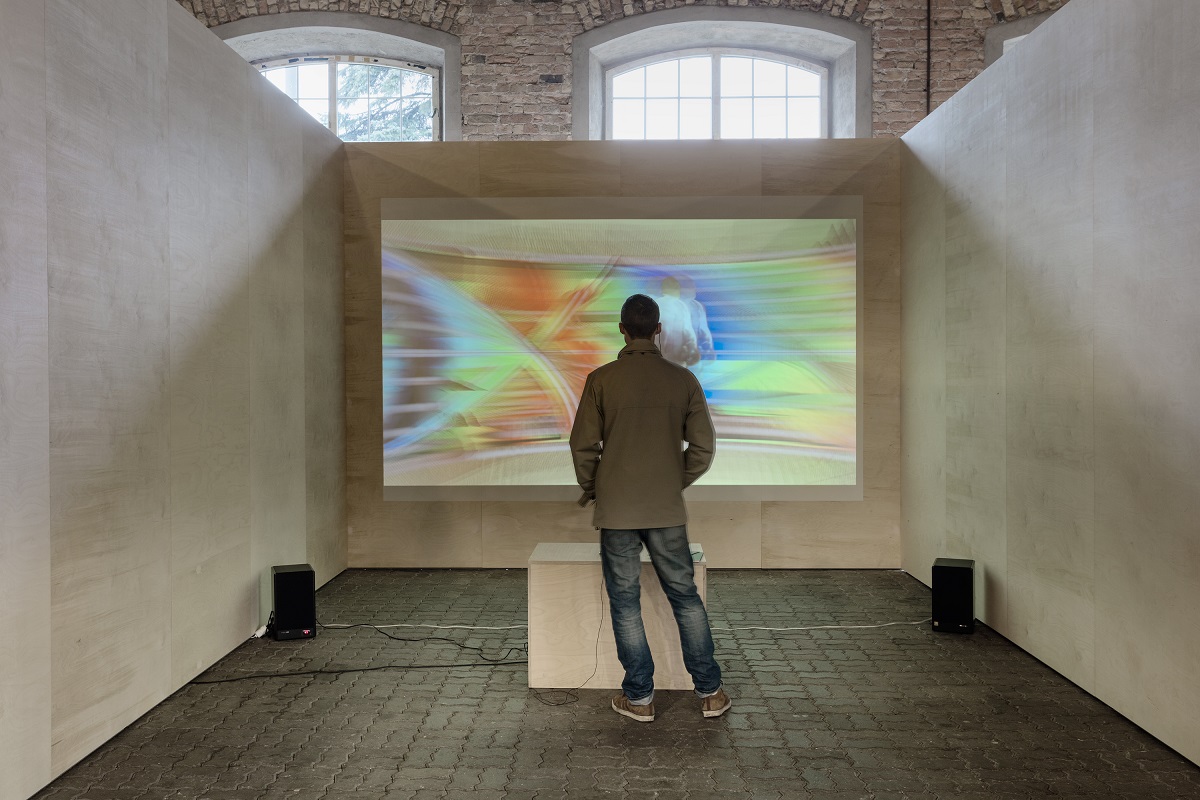
Jānis Garančs “Heroscope” 2009. Stereoscopic projection, interactive installation. Photography: Reinis Hofmanis

Light at the End of the Cable. Latvian Art in the Digital Era. Works from the state-owned collection of the future Latvian Museum of Contemporary Art (curator Helēna Demakova), exhibition view, Latvian Railway History Museum, 2016. Photography: Reinis Hofmanis

Miks Mitrēvics “Motel” 2003. 3 synchonized videos. Photography: Reinis Hofmanis

Miks Mitrēvics “Motel” 2003. 3 synchonized videos. Photography: Reinis Hofmanis
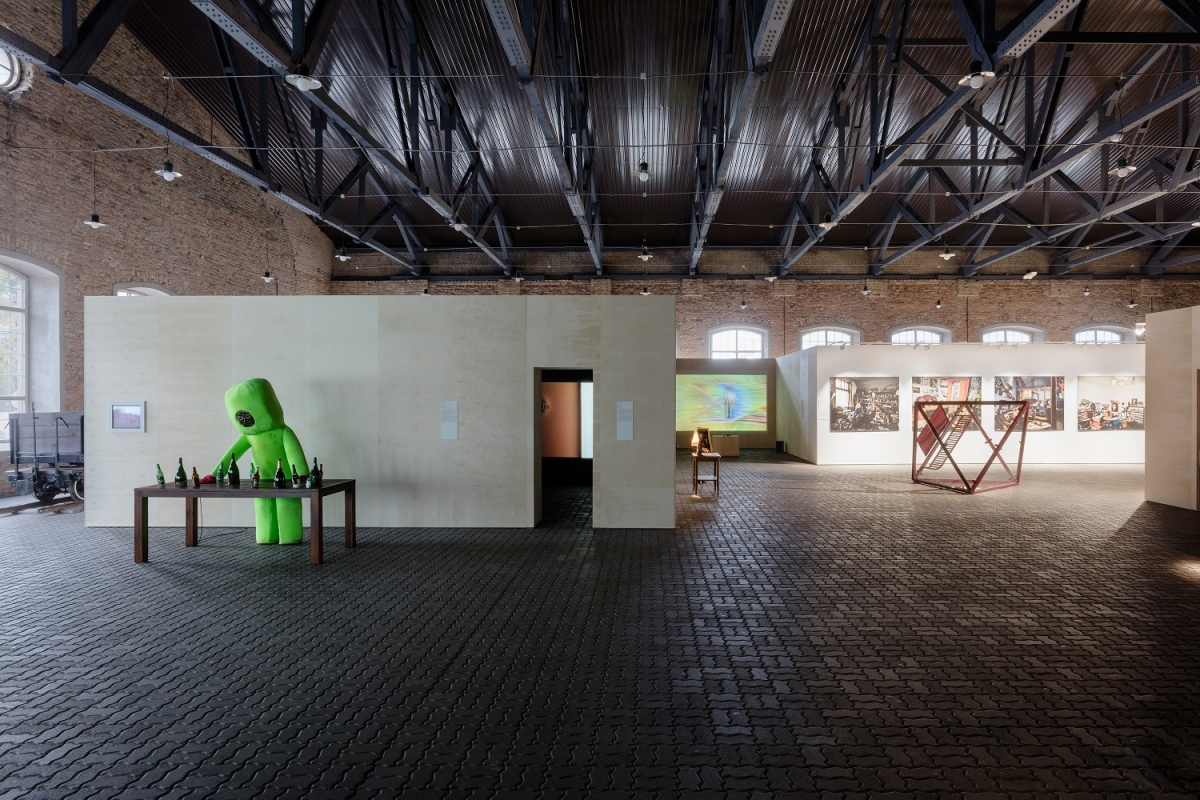
Light at the End of the Cable. Latvian Art in the Digital Era. Works from the state-owned collection of the future Latvian Museum of Contemporary Art (curator Helēna Demakova), exhibition view, Latvian Railway History Museum, 2016. Photography: Reinis Hofmanis
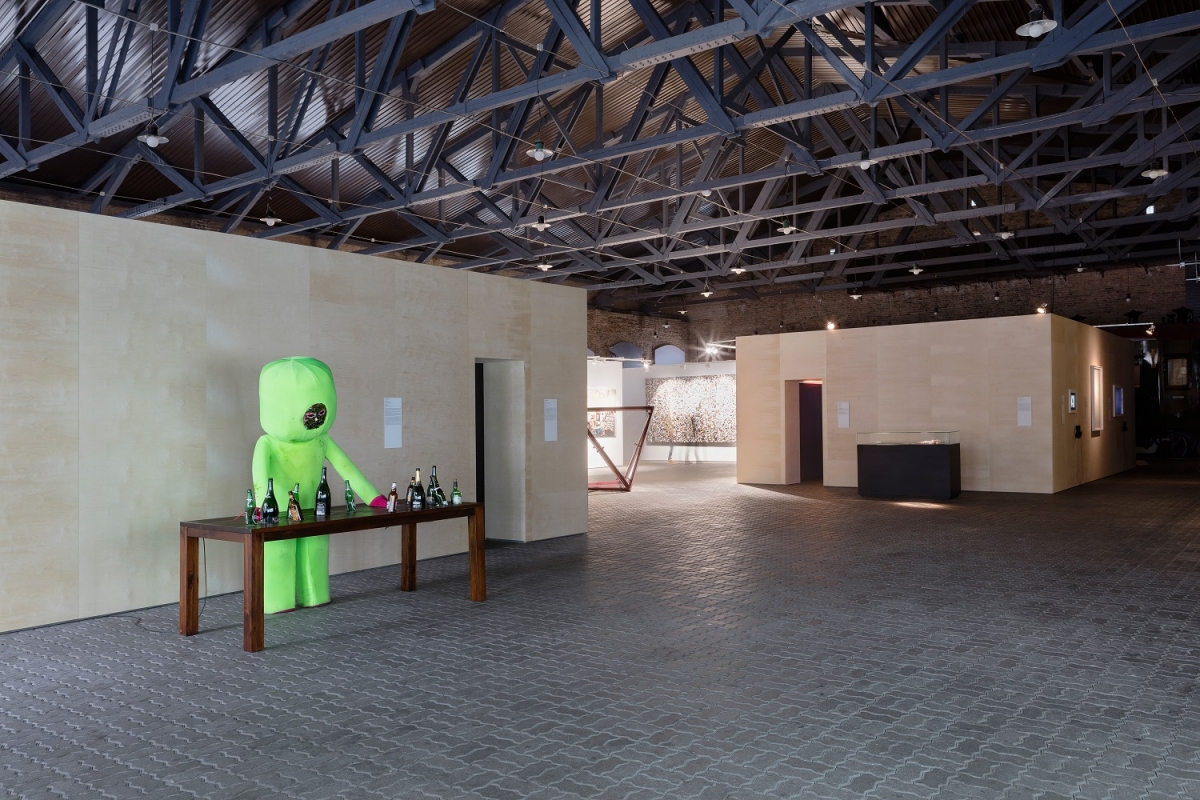
Light at the End of the Cable. Latvian Art in the Digital Era. Works from the state-owned collection of the future Latvian Museum of Contemporary Art (curator Helēna Demakova), exhibition view, Latvian Railway History Museum, 2016. Photography: Reinis Hofmanis

Light at the End of the Cable. Latvian Art in the Digital Era. Works from the state-owned collection of the future Latvian Museum of Contemporary Art (curator Helēna Demakova), exhibition view, Latvian Railway History Museum, 2016. Photography: Reinis Hofmanis
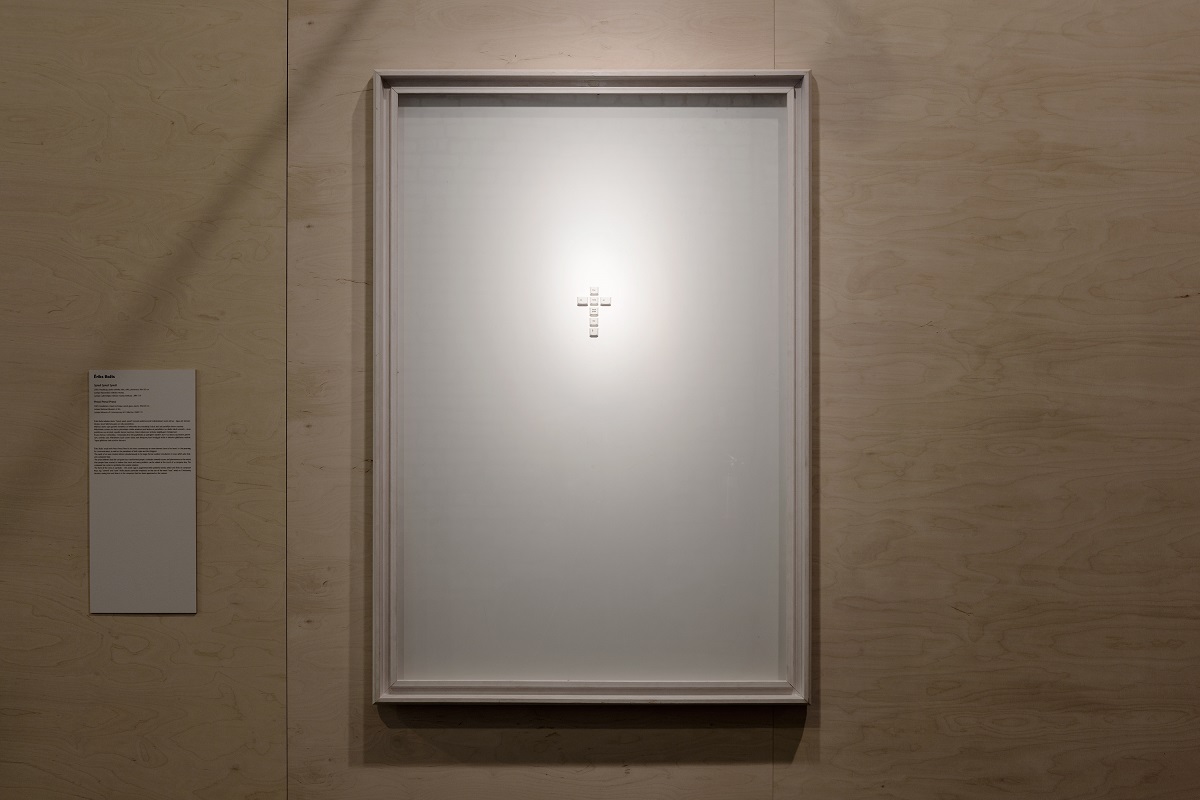
Ēriks Božis “Press! Press! Press!” 2003. Installation, mixed technique, wood, glass, plastic. Photography: Reinis Hofmanis
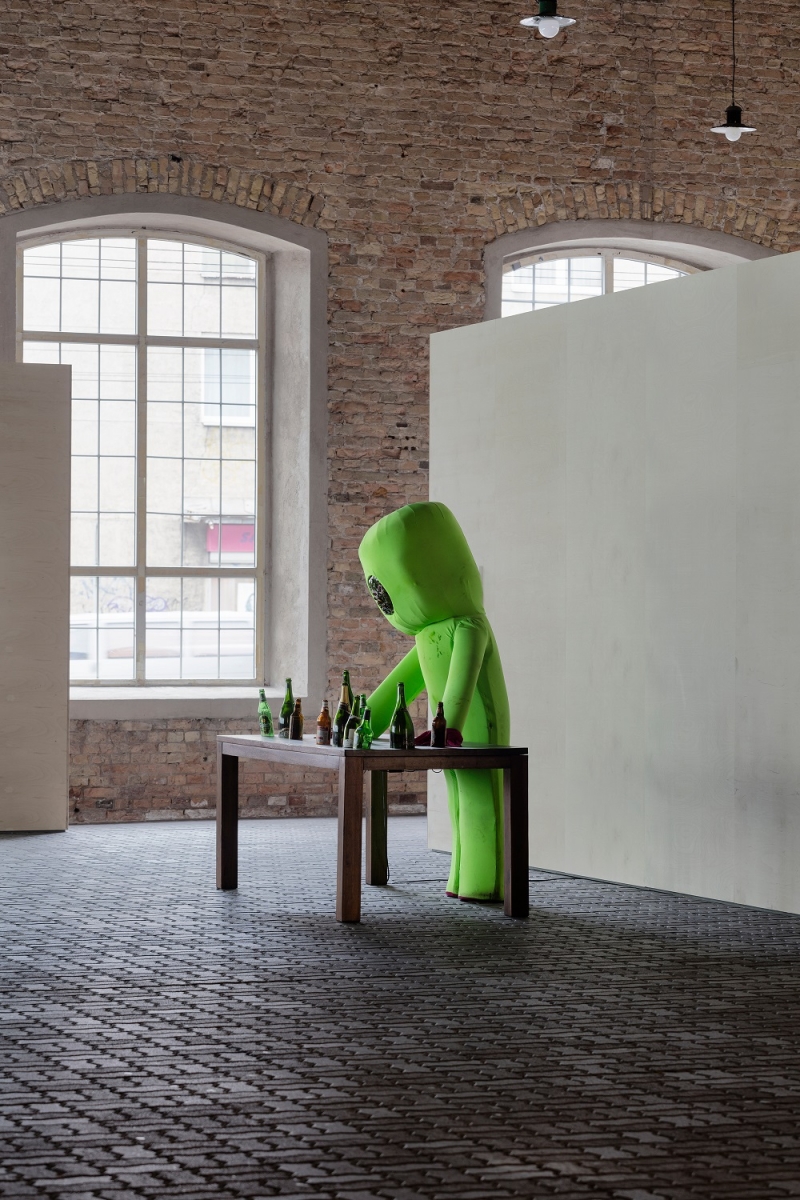
Maija Kurševa “My Friday” 2008. Video installation. Photography: Reinis Hofmanis

Maija Kurševa “My Friday” 2008. Video installation. Photography: Reinis Hofmanis

Kristīne Kursiša “The Diagnostics of Karma” 2003. Video installation. Photography: Reinis Hofmanis
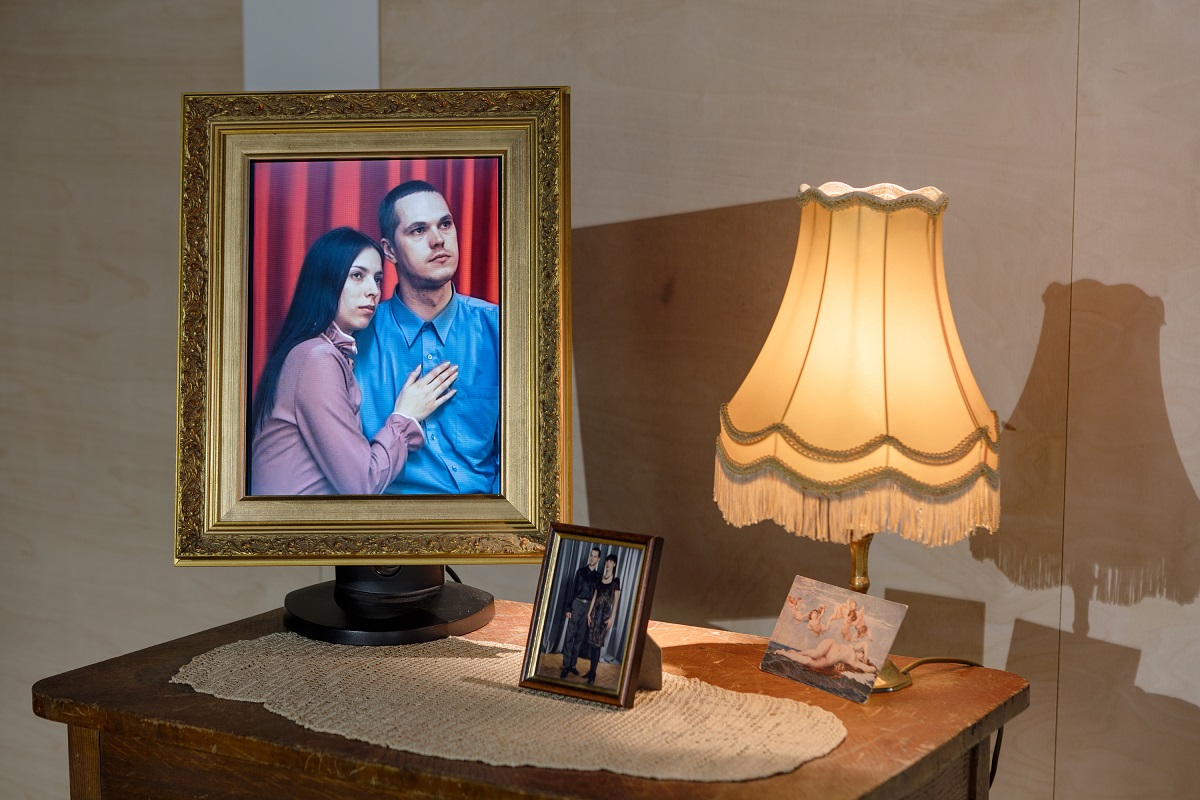
Kristīne Kursiša “The Diagnostics of Karma” 2003. Video installation. Photography: Reinis Hofmanis
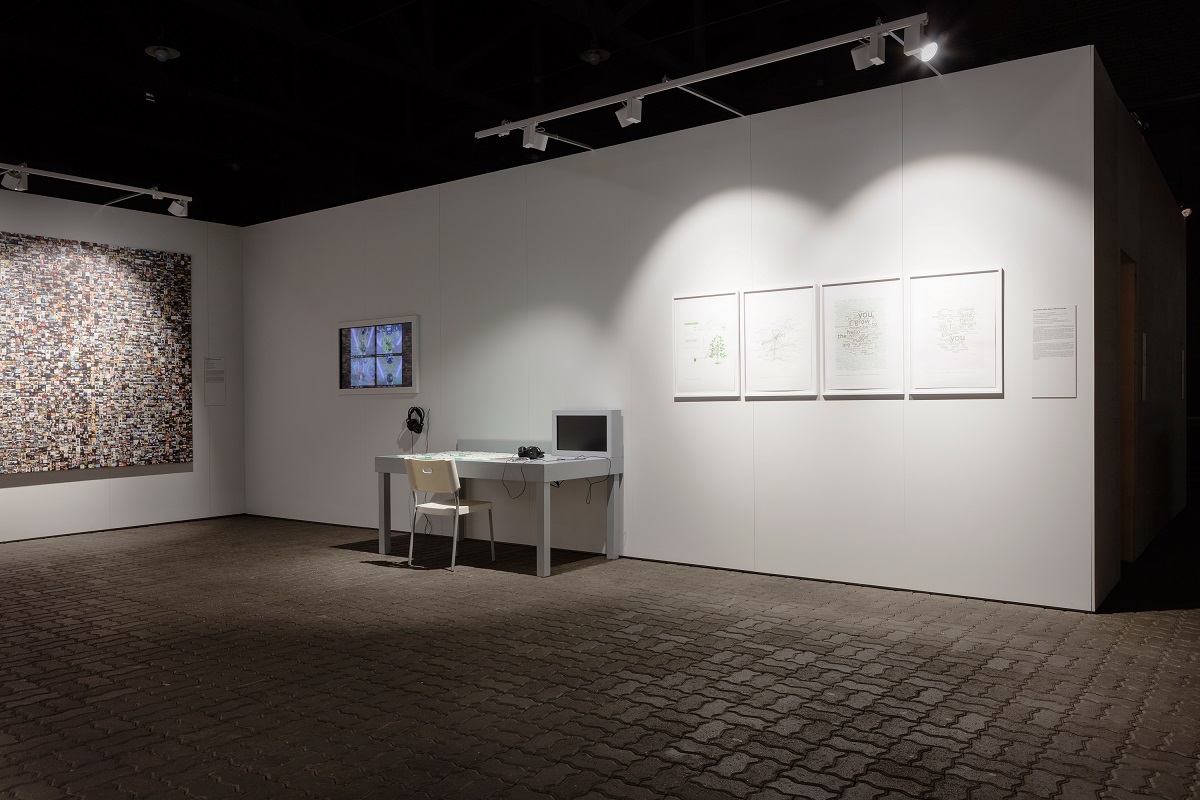
Light at the End of the Cable. Latvian Art in the Digital Era. Works from the state-owned collection of the future Latvian Museum of Contemporary Art (curator Helēna Demakova), exhibition view, Latvian Railway History Museum, 2016. Photography: Reinis Hofmanis
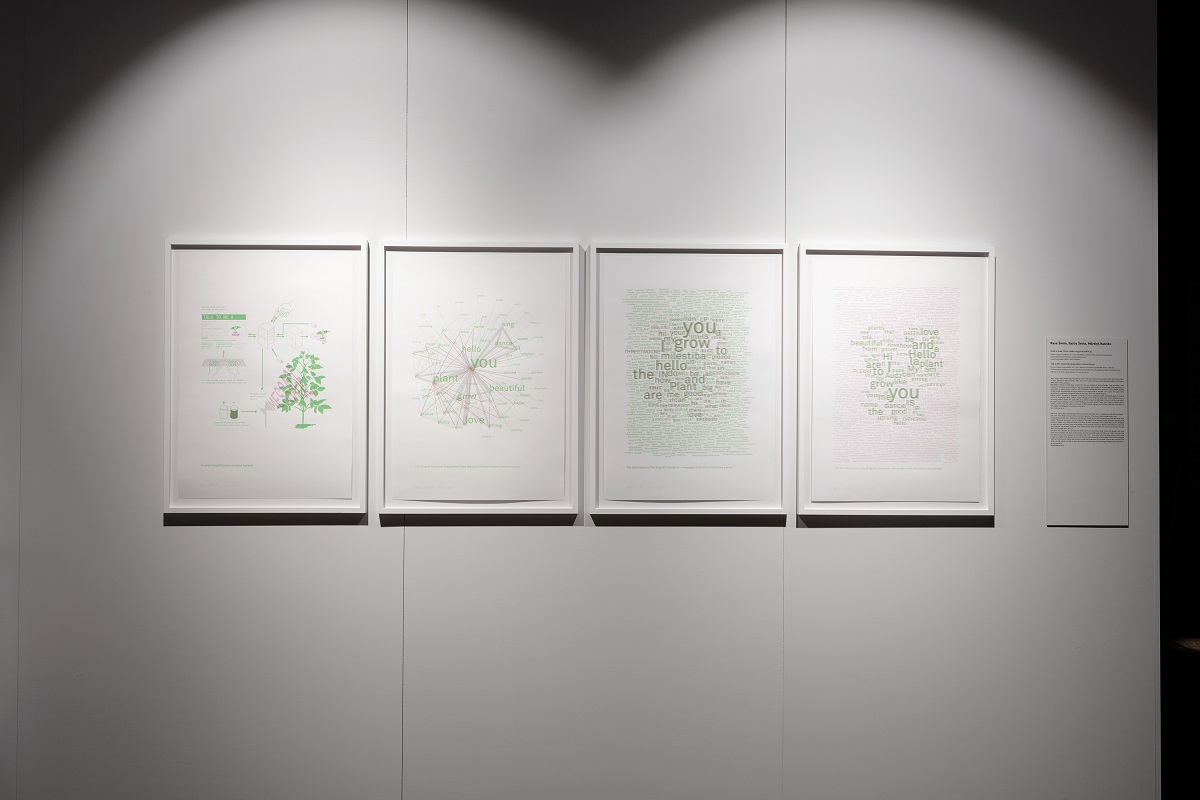
Rasa Šmite, Raitis Šmits, Mārtiņš Ratniks “Talk to Me” Exploring human-plant communication. Photography: Reinis Hofmanis
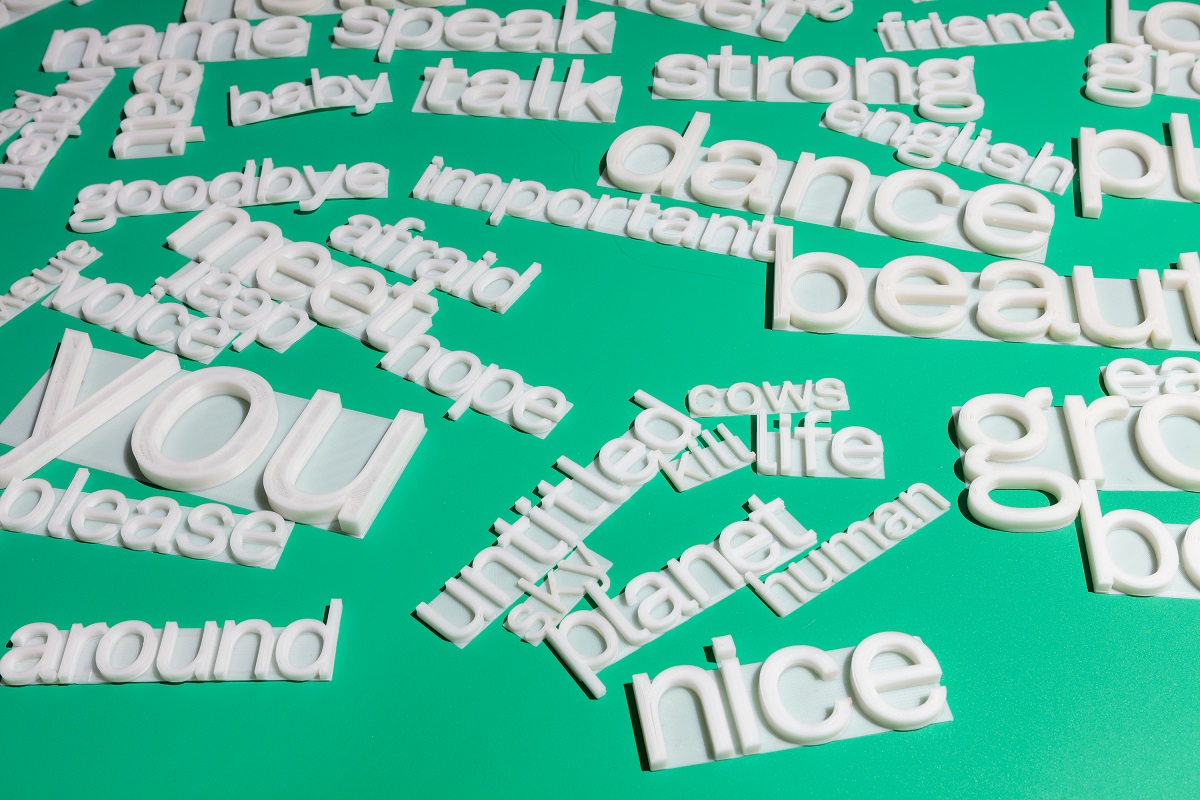
Rasa Šmite, Raitis Šmits, Mārtiņš Ratniks “Talk to Me” Exploring human-plant communication. Photography: Reinis Hofmanis

Alise Tīfentāle, Lev Manovich, Mehrdad Yazdani, Jay Chow “The Exceptional and the Everyday: 144 hours in Kiev” 2014. Print. 1111 x 328 cm. Photography: Reinis Hofmanis

Alise Tīfentāle, Lev Manovich, Mehrdad Yazdani, Jay Chow “The Exceptional and the Everyday: 144 hours in Kiev” 2014. Print. 1111 x 328 cm. Photography: Reinis Hofmanis
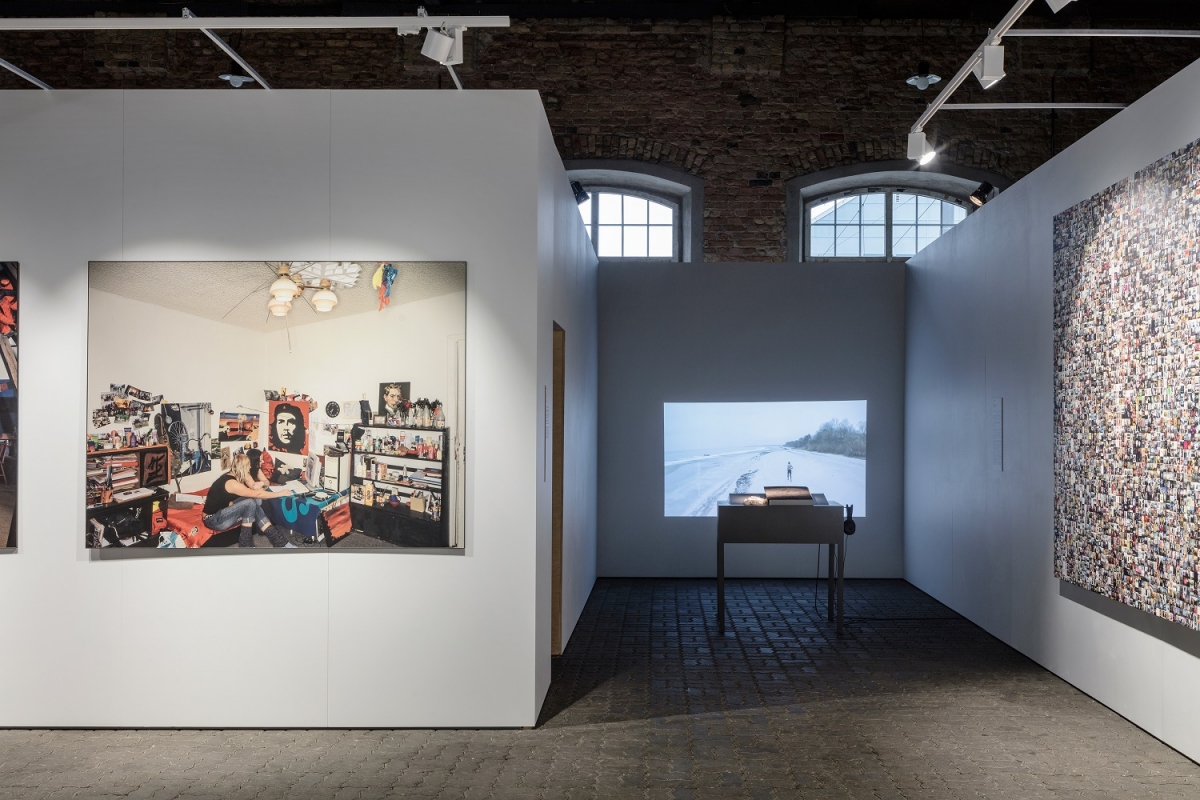
Light at the End of the Cable. Latvian Art in the Digital Era. Works from the state-owned collection of the future Latvian Museum of Contemporary Art (curator Helēna Demakova), exhibition view, Latvian Railway History Museum, 2016. Photography: Reinis Hofmanis
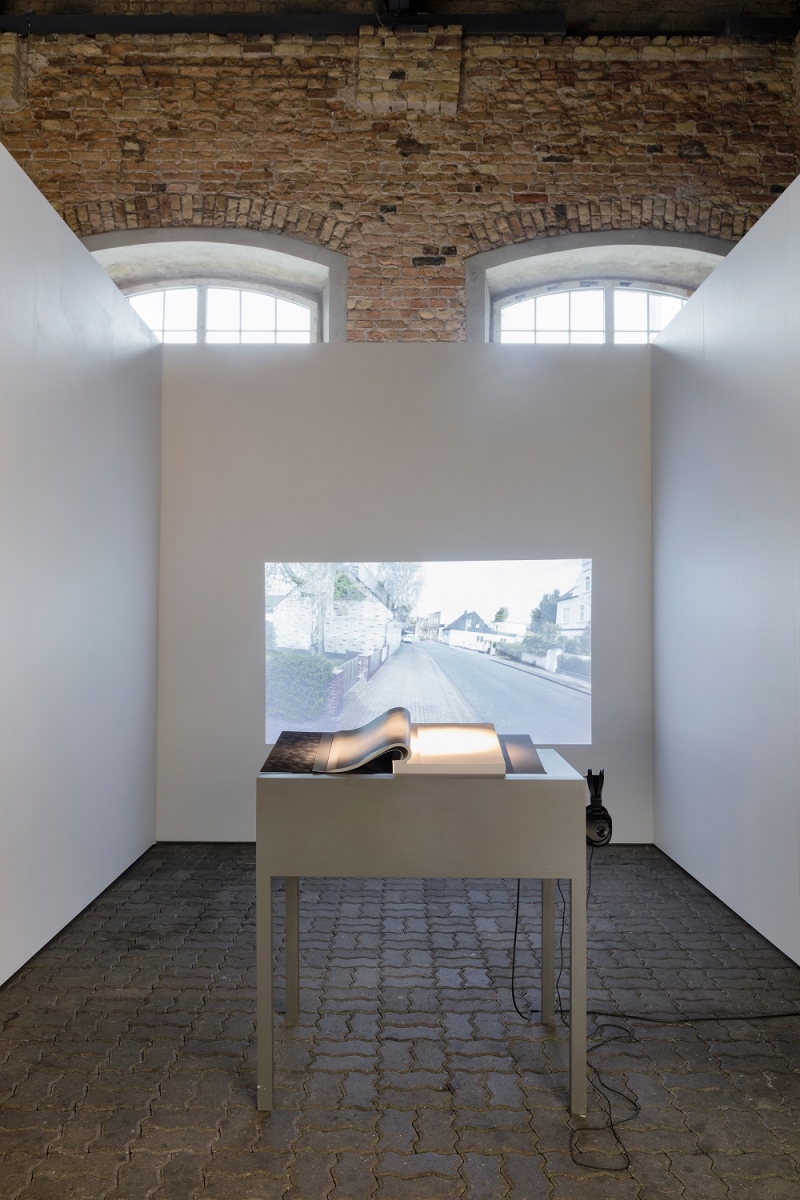
Kristaps Epners “The Run” 2013. Video installation, book. Photography: Reinis Hofmanis
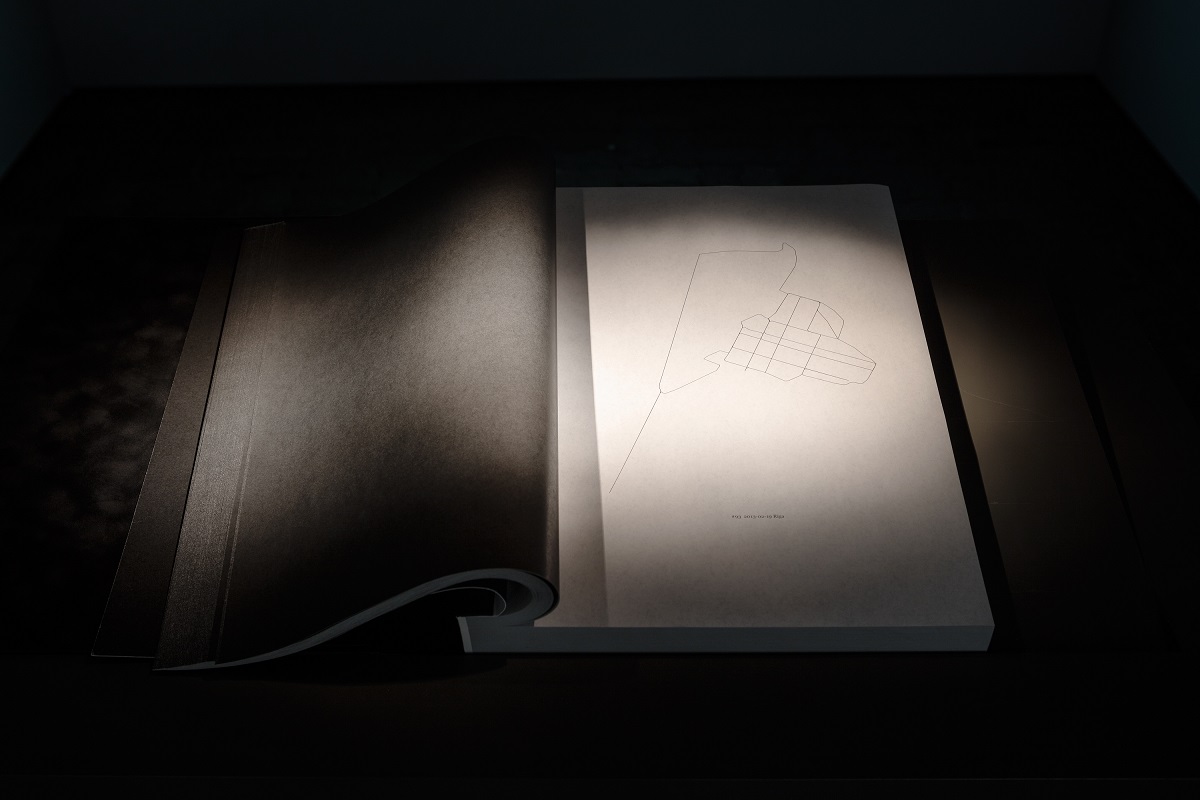
Kristaps Epners “The Run” 2013. Video installation, book. Photography: Reinis Hofmanis

Anta Pence, Dita Pence “Light at the End of the Cabel” 2009. Kinetic object. Photography: Reinis Hofmanis
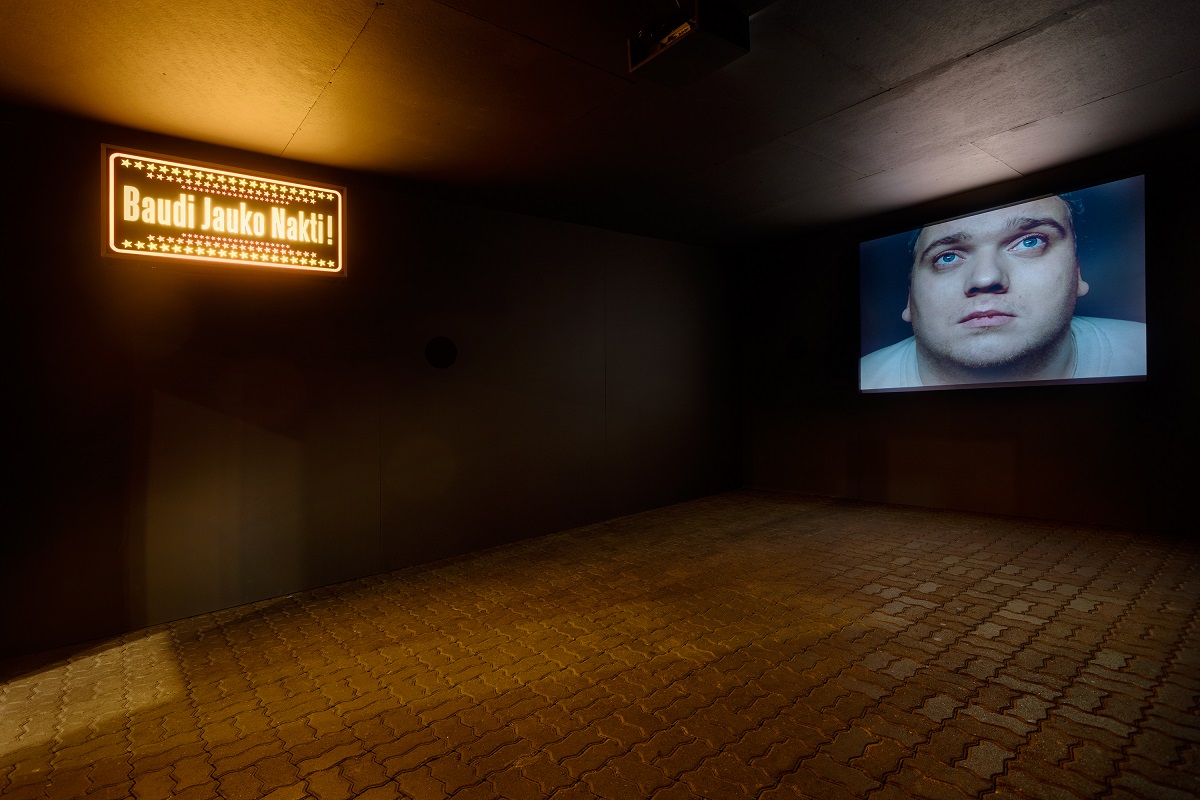
F5 “Have a Nice Night!” 2002. Installation, video. Photography: Reinis Hofmanis

F5 “Have a Nice Night!” 2002. Installation, video. Photography: Reinis Hofmanis
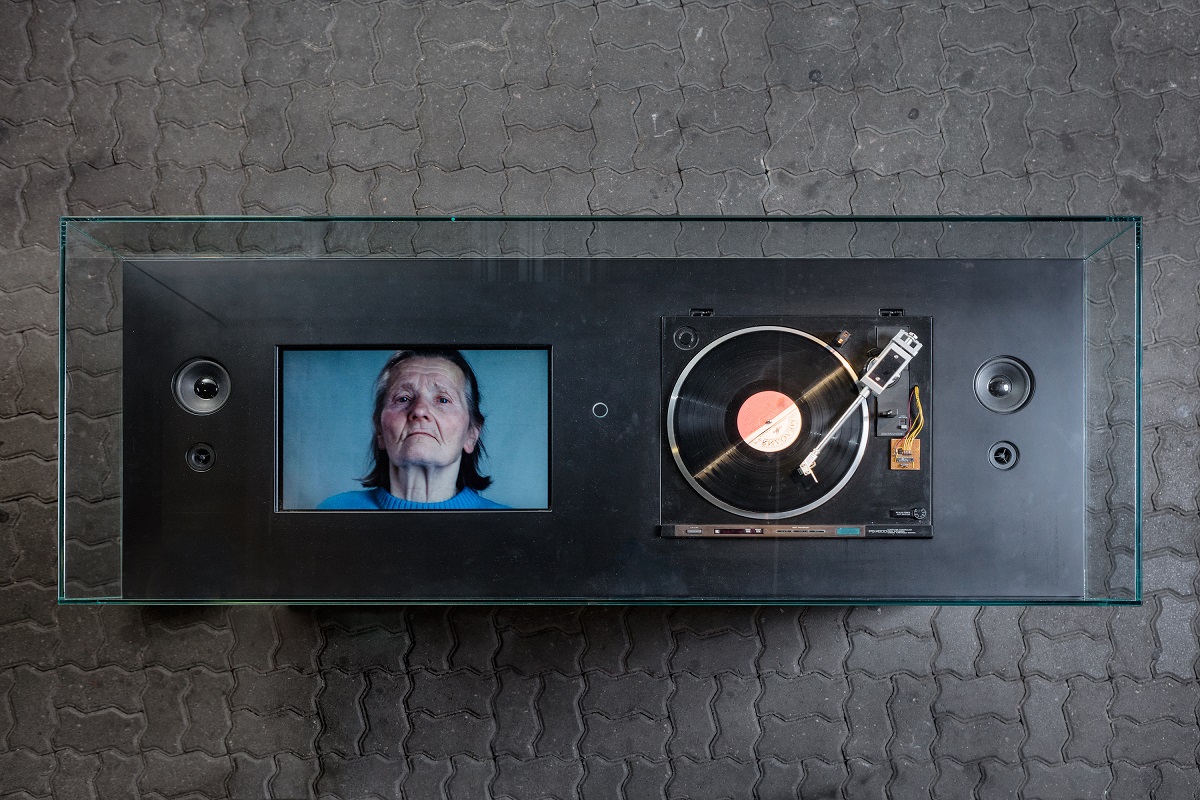
Evelīna Deičmane “Don’t Dream and Don’t Think” 2008. Object, video installation. Photography: Reinis Hofmanis

Evelīna Deičmane “Don’t Dream and Don’t Think” 2008. Object, video installation. Photography: Reinis Hofmanis




